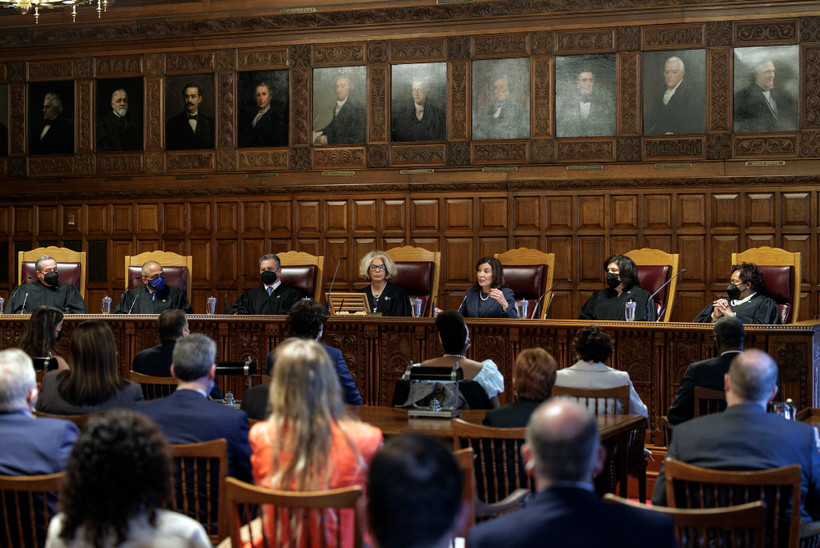A New Conservative Majority on New York’s Top Court is Upending State Law
A new four-judge bloc has consistently voted together in its most recent term, impacting criminal defendants, workers and people suing police.

This story was published in partnership with City & State.
This story was published in partnership with City & State.

Great Meadow and Sullivan prisons are slated to shut down in November. The state could close up to three more over the next year.
More counties are turning to private corporations to run medical care in jails. The companies have deadly track records.
Joseph Moran has long faced accusations of dishonesty — even from fellow officers — records show.
Before Kathy Hochul paused it, the tolling program lost the little labor support it had when the Transport Workers Union withdrew its backing this spring.
Rebecca Lamorte was let go by her employer in June, prompting the Assembly Speaker to place an upset call to her boss.
For tenants in the first upstate city to adopt rent stabilization, benefiting from the law’s basic protections is an uphill battle.
Medicare Advantage plans are spreading across upstate New York, despite a reputation for denying care. In Cortland County, retirees kept it at bay.
No state pursues workers for overpaid unemployment benefits as aggressively as New York. A proposed reform is colliding with New York’s own repayment problem.
New Yorkers for Local Businesses has spent half a million dollars trying to kill a bill to help workers recover stolen wages. Almost all its backers appear to own McDonald’s franchises.


